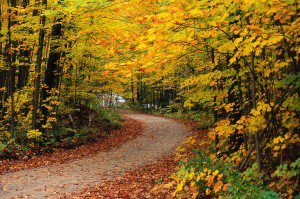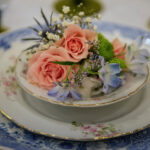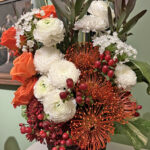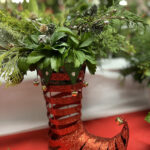PLANT PROPAGATION
Plant propagation is the ability of plants to reproduce without sexual reproduction, by producing new plants from existing vegetative structures. That is, growing a new plant from anything but a seed: such as roots, stems or leaves.
You can clone in your own backyard!
Why clone?
Clone when you want plants that are identical to their parents,
when you want to save seedless plants or hybrids (which won’t come true to seed), when you want great numbers produced in a short time and when you want a mature plant in a shorter period of time.
How to Propagate/Clone
Just plant specialized structures such as bulbs, corms, tubers, rhizomes. Daffodils, tulips, hyacinths, dahlias, garlic, shallots, potatoes all grow from these structures.
Make Divisions by breaking up clumps of perennials to make more clumps. This works for plants that grow in clumps or those having more than one stem emerging from the soil. Pry apart the multiple stems so that each remaining stem has a fair amount of roots, and replant each piece immediately. This method also works on some house plants, such as Asparagus fern.
Additionally, offsets and plantlets form naturally on some plants, and can easily be “divided” off the main plant. Examples are Aloe vera, bromeliad “pups”, African violets, Spider plant and “mother of thousands.” Similarly, some plants such as strawberries and bamboo grow from runners off the main plant.
Make Cuttings
Stem cuttings are probably easiest. Just cut off a plant piece and force it to grow roots! Some, such as Coleus, willows, Impatiens, wax (fibrous) begonia and many others, will root easily in water. You may also apply a dusting of rooting hormone, and place the cutting in a sterile medium and humid environment to root.
Leaf cuttings are also easily made from plants such as jade, begonia, African violet and Sansevieria). Snip off a leaf, pin it down to the soil (or a sterile medium), and keep it moist until roots develop!
Layering “Tip layering” happens naturally with many plants, such as blackberries and forsythia. Roots are produced when the stem is pinned the soil or moist medium. This is easy to do with ivy as well.
Air layering is much like making a stem cutting, but without completely separating the pieces – make a partial cut, wrap the partially cut stem in a moist medium, and separate when roots are produced. Two good candidates for this are Diffenbachia and Dracaena.
Grafting requires attaching a shoot to the root stock of another plant. This is often done with fruit trees and roses.
Tissue culture (orchids, etc.): anytime you need many clones fast!
HORTICULTURE TIPS
During the gardening season keep a record of things that you would like to do differently next year. Take note of problems and growth for a more successful next year. Close up photos will remind you accurately of color, texture, size and location. Make note of what you enjoyed!
PLANTS NEED NITROGEN TO GROW. Atmospheric nitrogen is not readily available to plants. Synthetic fertilizer is available but disappears quickly and leaves behind salts. Organic fertilizer and compost provide nitrogen as plants need it and need less frequent replacement.
INVASIVE SPECIES
Invasive species are organisms (animals as well as plants) that are not native to an area, and that can spread rapidly over large areas. This could mean organisms from another country, or another area of this country. Since they are away from their native controls (insects, diseases, etc.) population growth is unchecked, and explosive. Not all introduced plants are problems – corn, wheat, many garden plants have been introduced. We’ve become accustomed to others such as weeping willows, dandelions and Queen Anne’s Lace. In fact, about 1/3 the plants in New England are exotics, and most are not problems.
What Problems Do Invasives Cause?
Invasives out-compete native plants, causing them to become endangered. They often cause loss of habitat and food for wildlife, and sometimes change the actual habitats in which wildlife grows.
They serve as host reservoirs for plant pathogens and other organisms that can infect and damage desirable native and ornamental plants, and sometimes hybridize with them.
This “biological pollution” causes the reduction of biodiversity in an area.
Sample Problems Species In Our New England Area:
Autumn Olive
Norway Maple
Garlic Mustard
Goutweed
Purple Loosestrife
Yellow Flag
Honeysuckle (various)
Burning Bush (Euonymus)
Multiflora Rose
Glossy Buckthorn
Asiatic Bittersweet
Japanese Barberry
Japanese Knotweed
Phragmites (giant reed, replacing native cattails)
What To Do About Invasives
- Above all, don’t buy more – and don’t give the ones you have to anyone else.
- Use more native plants in your garden.
- Control exotic invasive plants in your landscape either by removing them entirely or by managing them to prevent their spread outside your property.
- Learn more about them, and spread the word.
PRUNING FOR BEAUTY
We prune plants to make them more beautiful, to encourage flowering and branch color, and to help them grow strong and healthy. Some trees and shrubs need never be pruned while others require a seasonal cutting.
Light pruning for health
Nearly all woody plants develop little problems that can lead to big diseases or unwanted growth. Careful cuts throughout the year go a long way to ensure healthier plants. Keep a quality pair of clippers in your back pocket while in the garden so you can correct unhealthy conditions with a kindly cut.
Remove any part of the plant that looks diseased before the disease can spread. Remove dead twigs and branches so these don’t become pest entry points. If branches are crossed or touching, remove the smaller one because friction creates wounds that may lead to problems. Trim off whip-like sucker growth originating at the base of the trunk so it doesn’t ‘suck’ growth energy from the rest of the tree. Do not prune late in the summer. Allow shoots to mature and prune again in winter.
Pruning the natural way
Unless you desire a formal garden, no plant looks natural when it’s shaped into a ball or box. Each species has its own natural beauty, and pruning should enhance this form, not fight it. Woody plants that must be cut back for size or shape should be done in a natural way, by working from the inside out. Strive to retain enough outer foliage so that each cut is cloaked in leaves.
Pruning deciduous flowering shrubs
How and when you prune deciduous flowering shrubs influences the size and quantity of blossoms, or whether they flower at all. The key is to know when it flowers, and whether blossoms develop on the older twigs or newly grown ones.
Spring flowering shrubs blossom on twigs that matured the year before. They blossom so early there is no time to put on new growth before it is time to flower. These shrubs are pruned at the end of their flowering season to encourage more abundant summer growth that will support next year’s crop of flowers. Examples include Bridal wreath, Forsythia (Forsythia), Lilac (Syringa), and Flowering Quince(Chaenomeles).
Summer flowering shrubs blossom on new twigs grown in the spring. These plants are pruned in winter while dormant, which encourages a flush of new stems in spring. These in turn bear more abundant flowers in mid to late summer. Examples include most Butterfly Bush (Buddleia), Crape Myrtle (Lagerstroemia), Rose of Sharon (Hibiscus syriacus), Spirea (Spiraea japonica), Beautyberry (Callicarpa), Japanese Mock Orange (Pittosporum tobira), Potentilla (Potentilla), Snowberry (Symphoricarpos), and Hydrangea (Hydrangea) varieties that bloom on new wood.
For larger pruning jobs, check with your local garden center for advice.
Recycle your prunings
FALL GARDENING TIPS
Putting your garden to bed can be tiresome, so establish a comfort schedule for your chores.
- Pick a comfortable weather day.
- Identify and label plants that need attention: near dead, diseased, pruning, dividing plants, seeds, and relocation of plants. First remove dead or diseased plants.Do not compost dead or diseased plants. Remove seeds or spread seeds to new areas. Finally attend to dividing and seeds. You can divide in pots for next year and plant pot into the ground. Next year it will be easier to transplant.
- Save and label seeds.
- Rake the beds. Leave some fall leaves for the tender plants such as roses and hydrangeas. Make a blanket of leaves around their base.
- To remove stalks of plants or not is your choice. Some people like the winter interest stalks provide. They provide wildlife cover. Seeds feed the birds and twigs help with nesting. It also brings the winter pleasure of bird watching.
- Leave ornamental grasses for great winter interest in the garden.
- Remove all annuals and vegetable plants. Do not put in compost if diseased or questionable.
- Weed perennials and all beds. This makes it easier in spring.
- Enrich the soil with materials of your choice.
- Water well all plant life; trees, shrubs, perennials, and winter vegetable for the winter.
- Apply winter mulch. A few inches of shredded leaves can encourage earthworm activity and lessen spring weed growth.
- Wrap all tender plants with burlap and protect small evergreens from winter conditions.
- After the first frost, dig tender tubers and store for next year.
- If you follow these tips you will be rewarded in the spring.







You must be logged in to post a comment.